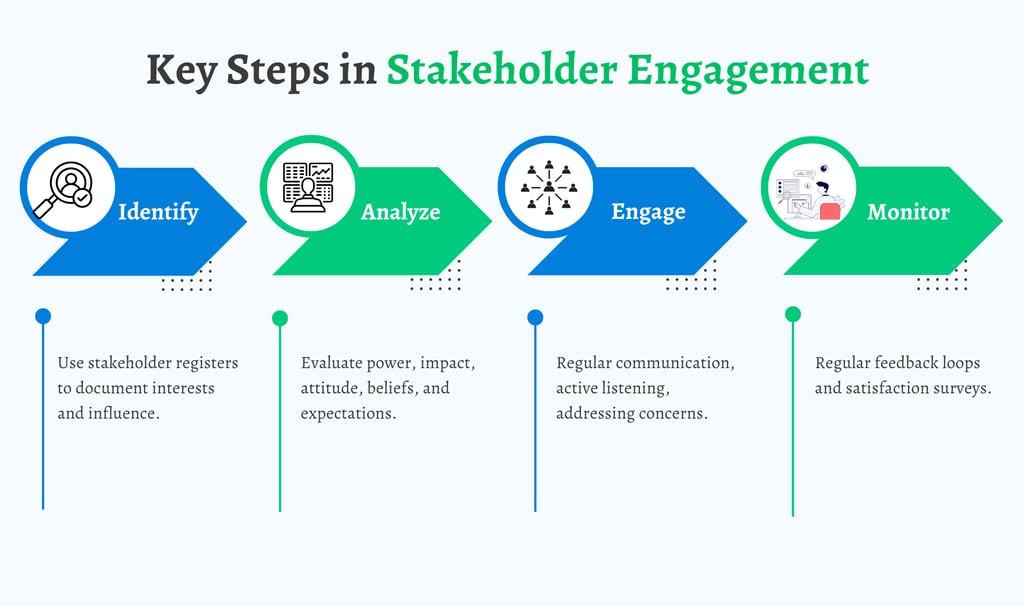Managing Stakeholder Expectations and Resource Allocation in Projects
Effective stakeholder management is about more than just communication; it's about fostering trust, encouraging collaboration, and ensuring every voice is heard throughout the project lifecycle. By mastering these skills, project managers can navigate the complexities of dynamic projects, ensuring successful outcomes and fostering long-term relationships with stakeholders.
Iyanna Trimmingham
7/29/20243 min read


Being an effective Project Manager today demands more than just technical expertise. Among the many responsibilities a project manager shoulders, adeptly managing stakeholder expectations and resource allocation, while adapting to ever-changing conditions, is critical for success. In a landscape where priorities can shift overnight and unforeseen challenges are the norm, mastering these skills is essential for driving projects to successful completion.
Effective stakeholder management is about more than just communication; it's about fostering trust, encouraging collaboration, and ensuring every voice is heard throughout the project lifecycle.
Understanding Stakeholder Dynamics
Who are stakeholders?
Stakeholders are individuals or groups that have an interest in the project's outcome. These can range from clients and team members to suppliers and regulatory bodies. Engaging stakeholders effectively involves understanding their needs, expectations, and potential influence on the project. This process is not static; it evolves as the project progresses and new stakeholders are identified.
Key Steps in Stakeholder Engagement:
Identify Stakeholders: Conduct a comprehensive analysis to identify all relevant stakeholders. Use tools such as stakeholder registers to document their interests and influence.
Analyze Stakeholders: Evaluate their power, impact, attitude, beliefs, and expectations. This helps in prioritizing engagement efforts and anticipating potential challenges.
Engage Stakeholders: Implement strategies to foster productive relationships. This includes regular communication, active listening, and addressing concerns promptly.
Monitor Stakeholders: Continuously assess the effectiveness of engagement strategies and adjust as necessary. This involves regular feedback loops and satisfaction surveys to gauge stakeholder sentiment.
Negotiating with Stakeholders
Negotiation is a critical skill for project managers, especially when it comes to securing resources and aligning stakeholder expectations with project goals. Effective negotiation requires understanding the interests and constraints of all parties involved.
Strategies for Effective Negotiation:
Prepare Thoroughly: Understand the needs and constraints of stakeholders. Gather relevant data and anticipate possible objections.
Build Relationships: Establish trust and rapport with stakeholders. This can be achieved through transparency and consistent communication.
Seek Win-Win Solutions: Aim for outcomes that satisfy both the project requirements and stakeholder needs. This involves creative problem-solving and flexibility.
Communicate Clearly: Articulate the benefits of proposed solutions and how they align with stakeholder interests. Ensure that all parties have a clear understanding of the terms agreed upon.
Managing Project Resources
Resource management involves planning, acquiring, and allocating both human and physical resources effectively. This process is crucial in ensuring that the project stays on track and within budget.
Key Components of Resource Management:
Resource Planning: Develop a detailed plan that outlines the resource requirements for each project phase. This includes estimating the type and quantity of resources needed and scheduling their availability.
Resource Acquisition: Secure the necessary resources through internal allocation or external procurement. This may involve hiring additional staff, renting equipment, or purchasing materials.
Resource Allocation: Assign resources based on their skills and availability. Use tools like RACI charts to clarify roles and responsibilities within the project team.
Monitoring and Adjusting: Track resource utilization and adjust as needed to address any shortfalls or surpluses. This ensures that resources are used efficiently and effectively throughout the project lifecycle.
Adapting to Dynamic Environments
Project environments are rarely static. Changes in scope, stakeholders, stakeholder priorities, and external factors can all impact the project. Adapting to these changes requires flexibility and a proactive approach to risk management.
Strategies for Adapting to Change:
Flexible Planning: Develop plans that allow for adjustments. Use iterative planning techniques to refine project goals and strategies as new information becomes available.
Proactive Risk Management: Identify potential risks early and develop mitigation strategies. This includes conducting regular risk assessments and updating risk management plans as the project progresses.
Continuous Learning: Encourage a culture of continuous improvement within the project team. Conduct regular retrospectives to identify lessons learned and apply these insights to future project phases.
Effective Communication: Maintain open lines of communication with stakeholders and team members. This ensures that everyone is aware of changes and can respond promptly and appropriately.
Conclusion
Managing stakeholder expectations and project resources in dynamic environments is crucial for project success. By building trust and fostering collaboration, project managers can turn stakeholders into active supporters, aligning everyone with the project goals. Flexibility, proactive risk management, and regular communication are key to navigating today’s complex project landscape.
Effective stakeholder engagement and resource management require continuous attention and adaptability. By embracing these practices, project managers not only drive project success but also enhance their value to the organization. This approach ensures sustainable growth and positions both the project and the manager for long-term achievements.

